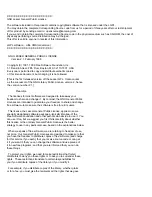
53
Copyright © Acronis, Inc., 2000-2010
2.12.1
Tape compatibility table
The following table summarizes the readability of tapes written by Acronis True Image Echo and
Acronis True Image 9.1 product families in Acronis Backup & Recovery 10. The table also illustrates
the compatibility of tapes written by various components of Acronis Backup & Recovery 10.
...is readable on a tape device attached to a machine
with...
ABR10
Bootable
Media
ABR10
Agent for
Windows
ABR10
Agent for
Linux
ABR10
Storage
Node
Tape written on
a locally
attached tape
device (tape
drive or tape
library) by...
Bootable Media
ATIE 9.1
+
+
+
+
ATIE 9.5
+
+
+
+
ATIE 9.7
+
+
+
+
ABR10
+
+
+
+
Agent for
Windows
ATIE 9.1
+
+
+
+
ATIE 9.5
-
-
-
+
ATIE 9.7
-
-
-
+
ABR10
+
+
+
+
Agent for Linux
ATIE 9.1
+
+
+
+
ATIE 9.5
+
+
+
+
ATIE 9.7
+
+
+
+
ABR10
+
+
+
+
Tape written on
a tape device
through...
Backup Server
ATIE 9.1
+
+
+
+
ATIE 9.5
-
-
-
+
ATIE 9.7
-
-
-
+
Storage Node
ABR10
-
-
-
+
2.12.2
Using a single tape drive
A tape drive that is locally attached to a managed machine can be used by local backup plans as a
storage device. The functionality of a locally attached autoloader or tape library is limited to the
ordinary tape drive. This means that the program can only work with the currently mounted tape and
you have to mount tapes manually.
Backup to a locally attached tape device
When creating a backup plan, you are able to select the locally attached tape device as the backup
destination. An archive name is not needed when backing up to a tape.
An archive can span multiple tapes but can contain only one full backup and an unlimited number of
incremental backups. Every time you create a full backup, you start with a new tape and create a
new archive. As soon as the tape is full, a dialog window with a request to insert a new tape will
appear.
The content of a non-empty tape will be overwritten on prompt. You have an option to disable
prompts, see Additional settings (p. 123).
Workaround
In case you want to keep more than one archive on the tape, for example, back up volume C and
volume D separately, choose incremental backup mode instead of a full backup when you create
an initial backup of the second volume. In other situations, incremental backup is used for
appending changes to the previously created archive.
















































